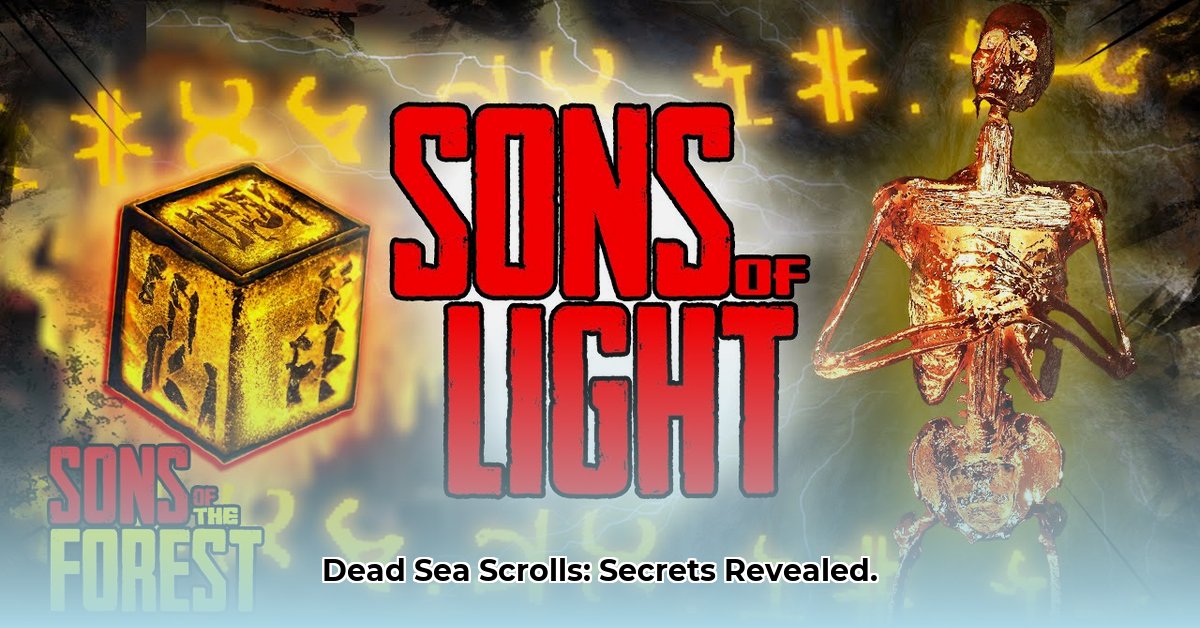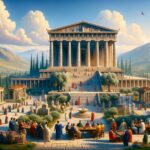The Dead Sea Scrolls, unearthed in the Qumran Caves, provide a captivating glimpse into the world of a Jewish sect during the tumultuous Second Temple period. Among these ancient texts, the War Scroll (1QM), also known as the War of the Sons of Light Against the Sons of Darkness, stands out for its vivid depiction of an apocalyptic war, a cosmic clash between the forces of good and evil. This exploration delves into the heart of this ancient battle plan, examining the identity, beliefs, and historical context of the Sons of Light, and the scholarly debates surrounding their story.
Deciphering the Dualistic Worldview: Sons of Light vs. Sons of Darkness
The War Scroll paints a stark picture of a world divided, a binary opposition between the Sons of Light and the Sons of Darkness. The Sons of Light, representing the Qumran community and their perceived allies—the tribes of Levi, Judah, and Benjamin, along with the exiles of the desert—stand as righteous warriors against the forces of darkness. Their adversaries, the Sons of Darkness, encompass not only their immediate enemies—Edom, Moab, Ammon, the Amalekites, and Philistia—but also the Kittim of Asshur and all who “violate the covenant.”
The identity of the Kittim remains a point of scholarly debate and has significant implications for dating the War Scroll. Some scholars associate the Kittim with the Seleucid Greeks, suggesting a composition date around the 2nd century BCE, coinciding with the Maccabean Revolt. Others connect the Kittim with the Romans, placing the scroll’s origin in the 1st century CE. This chronological ambiguity adds another layer of complexity to understanding the Sons of Light and the historical context of their envisioned conflict.
The War Scroll’s depiction of the conflict is not merely a philosophical exercise; it meticulously outlines a divinely ordained, two-part war. The first phase, the “War against the Kittim,” is portrayed as a swift, decisive battle, structured in a best-of-seven format, with divine intervention securing the final victory for the Sons of Light. The second phase, the “War of Divisions,” describes a protracted 33-year conflict, culminating in the twelve tribes of Israel conquering the “nations of vanity.” This structured narrative raises questions about the intended meaning: Was it a literal prophecy, a symbolic representation of spiritual struggles, or a combination of both?
More Than a Military Manual: Ritual, Liturgy, and Apocalyptic Expectations
The War Scroll transcends the boundaries of a typical military manual. While it details weaponry, formations, and tactical strategies, it also intricately weaves in religious rituals, priestly liturgies, and ceremonial practices. The inscriptions for trumpets and banners, the specific roles assigned to priests during battle, and the emphasis on purity and obedience all point to the sacred nature of the war. For the Sons of Light, this wasn’t merely a military campaign; it was a holy war, a divinely sanctioned struggle for the triumph of good over evil.
This fusion of military and religious elements reflects the Qumran community’s eschatological beliefs, their understanding of the end times. Their unwavering faith in the Sons of Light’s eventual victory, the total annihilation of darkness, and the establishment of eternal peace reveals their profound messianic expectations and their distinct identity within the tapestry of Second Temple Judaism. This belief system likely shaped their daily lives, their communal organization, and their interactions with the larger Jewish world, setting them apart and fueling their anticipation of the imminent arrival of the Messiah or, as mentioned in the scroll, “messiahs” (plural). This raises further questions regarding their messianic theology and how it relates to other contemporary Jewish groups.
Unresolved Questions and Enduring Enigmas: Scholarly Debates and Interpretations
Despite decades of scholarly scrutiny, the War Scroll remains shrouded in mystery. Debates surrounding its authorship, dating, and interpretation persist. Was the scroll the work of a single author, or a compilation of multiple sources and traditions over time? Did the detailed military descriptions reflect actual combat strategies, or did they serve a symbolic function, representing the spiritual battles waged by the community? These unanswered questions highlight the complexity of the text and the challenges of reconstructing its historical and religious context.
Furthermore, the War Scroll’s connection to other Dead Sea Scrolls, such as the Community Rule (1QS) and the Rule of the Congregation (1QSa), adds another dimension to the puzzle. These texts share thematic similarities, including the dualistic worldview, the emphasis on purity and obedience, and the organization of the community. However, they also exhibit discrepancies, particularly regarding messianic expectations. Exploring these intertextual relationships is crucial for gaining a more comprehensive understanding of the Sons of Light, their beliefs, and their place within the broader landscape of Second Temple Judaism.
The War Scroll and the saga of the Sons of Light offer a compelling window into a unique and enigmatic Jewish community. Their story, a blend of military preparedness, religious fervor, and apocalyptic hope, continues to fascinate and challenge our understanding of Jewish history, religious thought, and the tumultuous world of the Second Temple period. The enduring debates surrounding this ancient text serve as a testament to its enduring power and the continuing quest to unravel its secrets.
- Discover Long Black Pepper: Flavor & Health Benefits - April 25, 2025
- Shocking Twists: The Grownup Review: Unreliable Narration - April 25, 2025
- A Quiet Place Book vs Movie: A Deep Dive - April 25, 2025
















